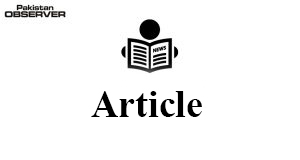DR RAJKUMAR SINGH
I N pre-and-post indepen- dence phase the issue of con structing a barrage acrossthe river Ganga at Farakka was alive and drew the attention of the people then in power. Continuous efforts were undertaken and committees of experts were appointed from time to time to formulate measures, to maintain uninterrupted navigation on Hooghly waterway. Opinions on the issue were sought by a large number of engineers of world repute like Stevenson Moore in 1919, SirWilliamWillcock in 1930, T.M. Oag in 1939 and A.Webster in 1946. At the time of partition Sir Cyril Radcliff, the chairman of the Bengal Boundary Commission, who was authorised to demarcate boundary between India and Pakistan, realised the importance of Farakka and saw to it that the entire Bhagirathi-Hooghly the off take from Ganga was given to India as it was a must for the existence of Calcutta city and the port. Construction of Farakka In post-independence phase Dr.Walter Henson of Germany was first and final to suggest, in 1957, that proposal for the construction of a barrage across the Ganga was the best solution of this technical problem. It was the most purposeful measure with which the long term deterioration in Bhagirathi-Hooghly could be stopped and could possibly be converted into a gradual improvement. Earlier a detailed report of Calcutta port prepared by Hydraulics Study Department of the port in 1957 was handed over to Dr. Henson in which it was said that in the monsoon season considerable volume of sand are brought down to the various bars and crossing the Hooghly and with the increase in the monsoon flows practical only with the sharp peaks, the river channel established by dredging during the dry season is disturbed. It also pointed out that the study improvement in depths over the bars and crossing occur when there are prolonged head water supply. The suggestion of Dr. Walter was based on this exhaustive report. Construction of a barrage at Farakka across the river Ganga was necessitated more from India’s point of view that forced New Delhi to take a lead in its planning and execution. Ten million tonnes of silt entered the river every year from the sea with high tides. The monsoon floods in Hooghly flashes six million tonnes of silt back to the sea leaving behind an accumulating balance of four million tonnes every year which was slowly but regularly choking sections of the river. Massive dredging operations had been undertaken from time to time to keep the shipping channel clear. Calcutta port authorities were spending Rs. 75 lakhs per year preceding the year 1972 for dredging but in 1972 the expenditure went up to Rs. 10 crores : yet the silting continues unabated. Main Objectives in View Calcutta is an important Indian port situated on the bank of the river Hooghly. The port is situated 126 miles away from the sea. It is through this Hooghly water way that ships of all states have to pass to reach Calcutta port and it is sustained by the supply of water from Ganga. After flood of an unprecedented magnitude in the year 1789, it abruptly changed its course and carved out the present day channel known as Padma that flows into Bangladesh territory. The upper reaches of its former channel became a distributory and consequently began to silt up, reducing the number of days in the year in which large vessel can use the port at a greater inland distance. Thus, the main objective of Farakka Barrage Project was the improvement of Calcutta port, and for the fresh water supply from Hooghly to adjoining industrial complex. The silt makes it impossible for the ships to reach Calcutta port throughout the year because there has been fast deterioration of sailing opportunities. In January 1957 the maximum drafts were 27 feet; in January 1959 the drafts fell to 24 feet. The number of sailing opportunities has also been seriously affected. In 1938 ships of draught of 26 feet could use the port nearly 300 days a year, now such vessels could not use the port at all. The resulting decline in traffic handled by the port had been drastic. Logics and efforts of Pakistan Pakistan had, since the beginning of the plan, been opposing the construction of a barrage across the river Ganga at Farakka mainly on the ground that execution of the project would reduce East Pakistan’s supply of water, deprive it of its share of water and further development. It also put forward seven points in favour of its argument for not constructing the barrage as it would cast an adverse effect on the overall development of its eastern part. Despite differences between the two over the construction and purpose of the barrage, delegations of India and Pakistan met several times to resolve the issue. Four meetings of the experts of the two countries were held between July 1960 and January 1962 but failed to break the deadlock. With a view to put pressure on New Delhi, Islamabad tried to internationalise the issue by raising it at the International Water For Peace Conference, held in Washington, in May 1967. Again in 1968 it was raised at the Afro-Asian Legal Consultative Committee meeting held in Bangkok. The year also witnessed bilateral talks between the two in the second week of May in which Indian side explained how the barrage would help East Pakistan in overcoming recurring flood menace. But nothing concrete came out from the several round of talks that were held between India and Pakistan in 1969-70. –The writer is Professor and Head, University Department of Political Science B.N.Mandal University, Bihar, India.









